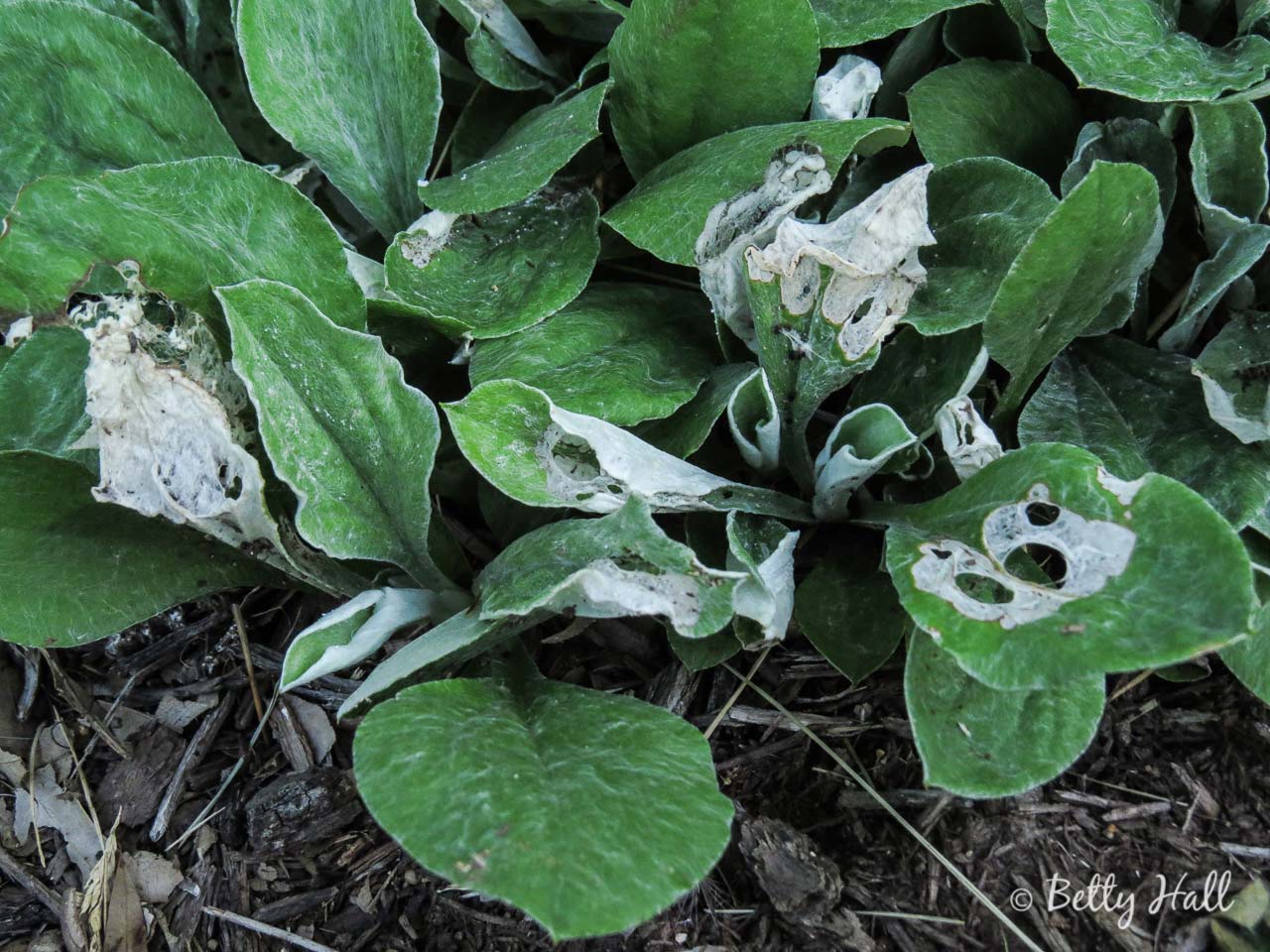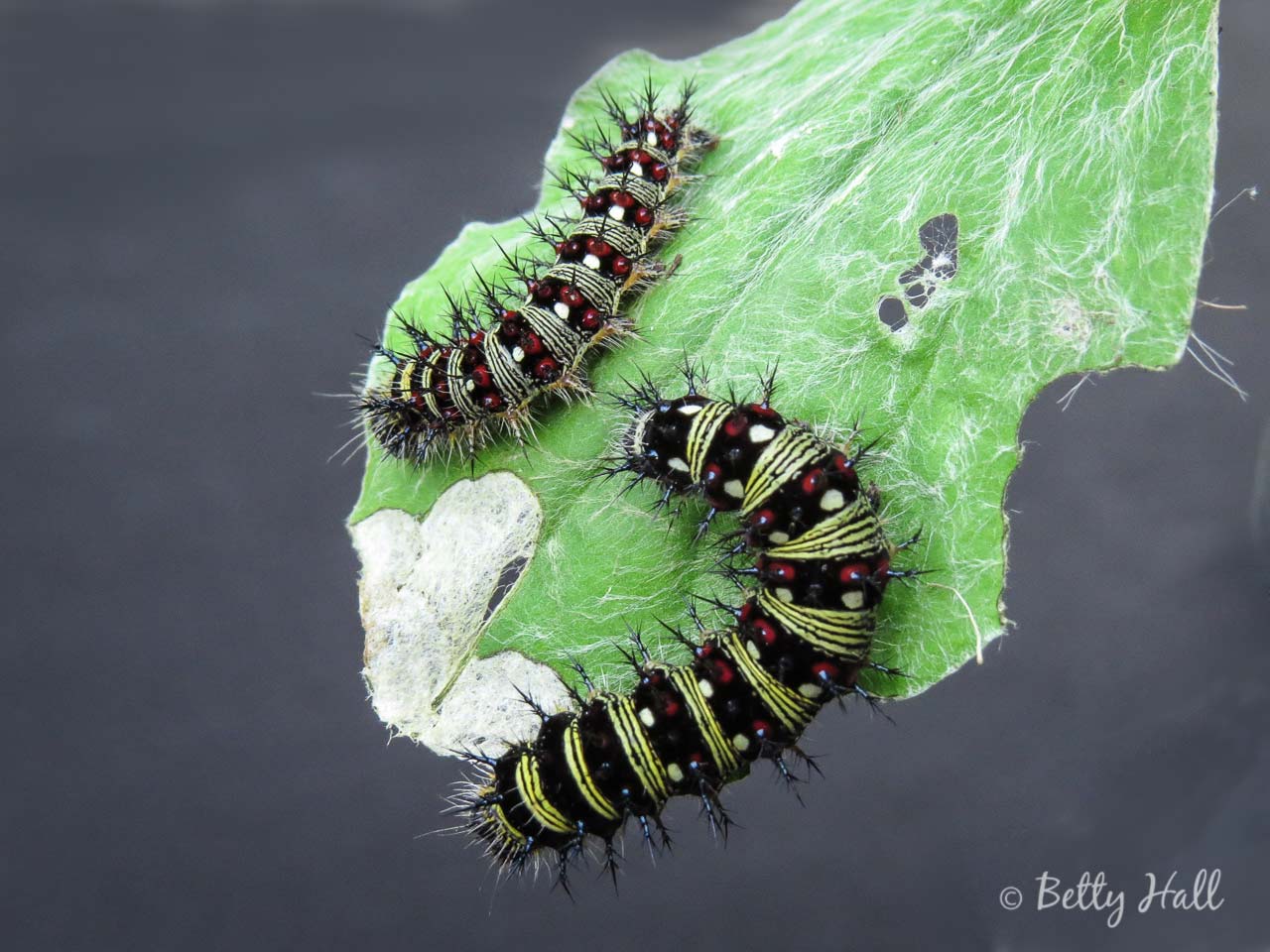I like Pussytoes (Antennaria spp.) for a ground cover. They are drought tolerant and I have patches of them growing in various degrees of sun and shade.
However, I recently became concerned when I saw leaves that looked damaged. I was pleasantly surprised when my friend, Connie May of Chrysalis Natural Landscapes, told me the damage was due to caterpillars of the American lady butterfly (Vanessa virginiensis). And I was relieved when she told me the caterpillars will not destroy the plants.
When I unrolled one of the curled leaves, I found this small caterpillar inside.
Looking closer, I found these larger caterpillars.
I find them quite attractive. Although their spines can help protect them from predators, I touched them and found them to be harmless.
This has been a fun learning experience. I now appreciate pussytoes, not only as an effective ground cover, but also as a host plant for American lady butterflies. The largest caterpillar has now made a chrysalis. I hope to share the rest of the story and images of the butterfly that emerges in a future post.





Now I want some pussytoes. Love both the cats and the butterflies!
Linda, I’ll be glad to give you a start next time you are here or anytime you want them.
What adorable baby butterflies 🙂
Judy, wouldn’t it be great if everyone knew of the connection between caterpillars and butterflies?
Well Betty, you have an AMAZING Back Yard! All these wonderful creatures and beautiful plants in your garden, and how privileged we are to enjoy viewing your
excellent photography. These caterpillars are striking, and so colourful. I hope we
may have an opportunity to see the butterflies!
Pauline, the American Lady is primarily a North American butterfly. However, the Painted Lady is quite similar and is found on all continents except Australia and Antarctica. I’m wondering if you have ever seen it in the Chanel Islands?
Ah yes, Betty ….. We do have the Painted Lady butterfly
in Jersey and all over the U.K. I will do my best to capture some on my camera soon!
Thanks, Pauline. Glad to know both of us can enjoy the Painted Lady Butterfly.
Thanks Betty! That post made me smile as I just discovered American Lady “cats” on my cudweed. Love how they make their little nest. My husband thinks I’m crazy leaving the cudweed growing everywhere. Will have to add Pussytoes to my landscape ; ).
Christine, I’m not familiar with cudweed but am guessing it is somewhat ‘weedy’. I hope you will try pussytoes. I like it as a ground cover and would grow it even if it wasn’t a host plant for the American Lady.
After you taught me what to look for, I found those curled leaves on my Spicebush last week. I’ll be watching closely now. Thanks Betty!
Carolyn, that sounds encouraging. I’ll be interested to know the ‘rest of the story’.
Hi, Betty. I just began exploring on Google to find out what critters are wrapping Pussytoes leaves around and gluing with silk. It was very exciting to find your site with great images. I see that the most recent comment was quite a few years back. But maybe you’ll see this. My pussytoe patches are pretty teeny (about a square foot or so), given how much each caterpillar needs but I’m willing to surrender the plants to them, though hoping some will survive to surprise with a coccoon or 2!
By the way my pussytoes are at the front edge of a bed that is seared all day all summer by the sun in very lean (poor) soil. Is there anthing I can do to help it spread better?
Cheers!
Jeannie
Jeannie,
Glad to hear from you and delighted to know you have Pussytoes – and that an American Lady butterfly has found them! By the time you see the ‘white webbing’ which was created by the caterpillars, the butterflies may well have flown away. ( I have to watch very closely to see the caterpillars and seldom see the mature butterfly).
I have a small patch of Pussytoes growing in bright sunlight and an even bigger one in full shade. (There are two different species of plants. One likes sun, the other likes shade). I’ve had caterpillars on both of mine. To enlarge your patch you might try breaking up some of the surrounding soil a bit and even adding a bit of ‘better’? soil, plus some water. It’s also possible to buy more plants. Best wishes!